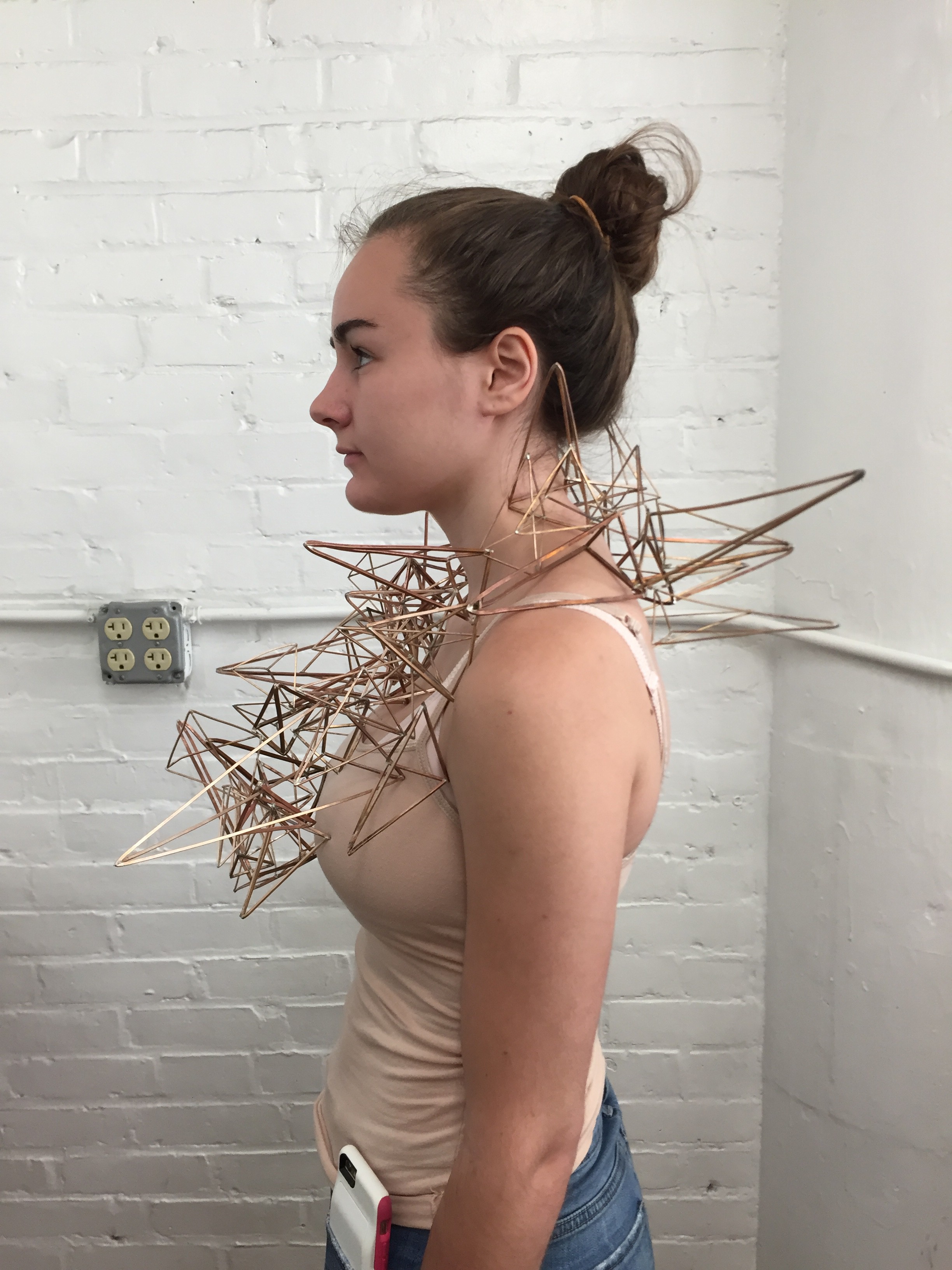Once I had run out of wire and had a box full of prisms, I panicked, because I realized that I had not thought through how I would attach the prisms to each other and to the body. I went back to my same jeweler mentors and talked through my problem. They suggested that I first turn the prisms into little clumps of prisms, by filing and making a lap joint in the metal. The lap joint created much more surface area for the two pieces of metal to connect, which made the whole apparatus more stable. While this solved my problem, it also meant that I would have to do more filing, which by this point I was getting quite sick of. Nevertheless, I persevered. The only challenge with the lap joints was being sure to file into the thicker gauge metal so I wouldn’t make the structure too fragile.
Once I had little clumps of prisms, each with about 3-5 prisms, I started to think about how they would fall on the body and decided to make them into a chain. Each loop of the chain was about five inches long. I started to hook and solder the triangles together until I had three long strands of triangles. I got my friends to model for me, and I started to lay the chains around them. I realized that putting the chains on was not the easiest feat, as they were huge in size, and pretty spiky. I also realized that the chains could interlock with themselves thus securing themselves to the body. I was pleasantly surprised with how this worked out, because I hadn’t worked out how the chains would lock and clasp together yet. This is also nice because it means that each time the chains are worn they can be worn differently and can conform to the wearer.

I am very pleased with how the prisms turned out. In thinking about ways to make it easily replicable and more useful for larger musical prosthetic events, an alternative would be to 3d print or laser-cut the prisms. I created a STL file of a triangle prism with thoughts of using this for larger groups of people and in a more interactive workshop setting instead of the bronze prisms.
 Kate Reed
Kate Reed
Discussions
Become a Hackaday.io Member
Create an account to leave a comment. Already have an account? Log In.